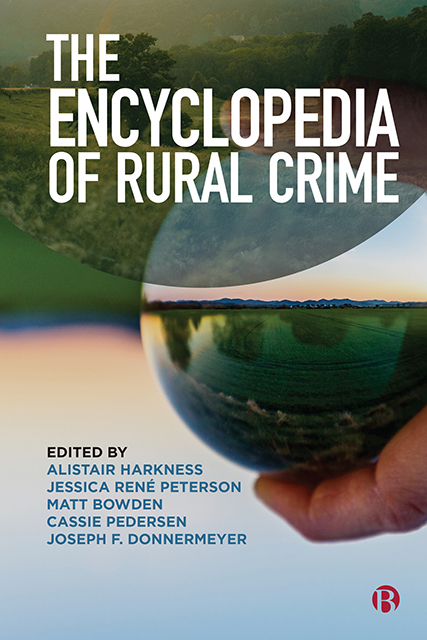Book contents
5 - Environmental and Green Criminology
Published online by Cambridge University Press: 20 June 2023
Summary
Environmental crimes and harms are rife in rural and remote areas, partly because they avoid close government scrutiny owing to their location, and partly because of activities such as mining, forestry and agriculture, with which some crimes are associated, are intrinsic to areas outside of urban centres. Given that environmental crime generally involves some type of natural resource use (such as illegal harvesting of plants and animals), contamination and pollution (such as illegal waste disposal) and/or modification of natural environments (such as illegal land clearance), it is not unusual to find such crimes associated with the countryside rather than the metropole (see Barclay and Bartel, 2015).
A conventional approach to environmental criminology views environmental crime primarily through the lens of legality. This means that it is concerned with harmful activities that have been formally criminalized in international and domestic law as criminal offences. Typically, these crimes include the illegal taking of flora and fauna (which includes activities such as illegal, unregulated and unreported fishing; illegal logging and trade in timber; and illegal trade in wildlife), pollution offences (which relates to issues such as illegal dumping as well as water, air and land pollution associated with industry) and transportation of banned substances (which refers to the illegal transport of radioactive materials and illegal transfer of hazardous waste).
Relying solely on legal definitions of environmental crime has its limitations, however. This is acknowledged by writers who adopt ecological understandings of nature and who thereby have different conceptions of how crime and harm might be conceived.
An ecocentric approach to environmental harm, for example, starts from the premise that the environment has value for its own sake apart from any instrumental or utilitarian value to humans. Protection of the environment may be based on either one of or a combination of conceptions of the rights of nature (as subject with rights, or object worthy of protection) and duties to nature (its intrinsic worth which therefore imposes a moral obligation and duty of care). From this perspective, environmental harm in its various manifestations, whether legally allowed or not, is worthy of critical criminological attention.
- Type
- Chapter
- Information
- The Encyclopedia of Rural Crime , pp. 26 - 29Publisher: Bristol University PressPrint publication year: 2022

